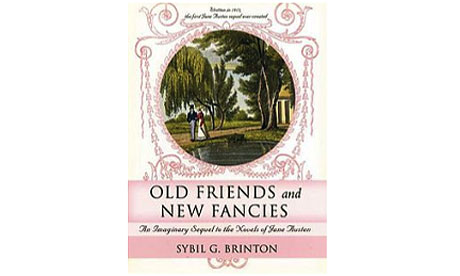
Number one fan ... EL James's Fifty Shades of Grey originated as a piece of fan fiction based on the Twilight series. Photograph: Michael Lionstar
If you were to lock a group of pop culture junkies and TV addicts in a bunker, tell them that the end of the world had arrived and that they had to preserve culture for posterity by writing books, what they would produce would be fan fiction (fanfic). This is actually the plot of a piece of fanfic from the 1950s, in which sci-fi fans survive Armageddon and rebuild civilisation in their own image. It may seem like a joke, but for many the rise of fanfic is "the end of the world". Fanfic is seen as the lowest point we've reached in the history of culture – it's crass, sycophantic, celebrity-obsessed, naive, badly written, derivative, consumerist, unoriginal – anti-original. From this perspective it's a disaster when a work of fanfic becomes the world's number one bestseller and kickstarts a global trend.
As we all know, Fifty Shades of Grey, originated as a piece of fanfic based on the Twilight series. Since it hit 31 million sales in 37 countries worried voices are asking: is this the beginning of an era in which fanfic overthrows original creation?
It's tempting to get caught up in paradigm-shift apocalypticism, but a closer inspection reveals that fanfic is not new at all. There have been phases, fads, peaks and controversies throughout its history and it displays and incredibly diverse range of sub-genres. There's crossover, AU, Hentai, OoC, Uber, Mary Sue, slash fic, hate fic, anti fic and even wing fic (in which familiar characters sprout wings and discover their new beauty through acts of mid-air coitus). So where did this terrifying range of forms begin? And is Fifty Shades really a threat to culture?
It's time to learn some of the jargon that fans use to describe their fic.
If we see fanfic as "the reworking of another author's characters" then this form really only appears for the first time in history with the invention of legal authorship in the 18th century through copyright and intellectual property laws, after the invention of the printing press. After all, you can't have derivative works or copies if there are no regulations over what constitutes original works, or separates ownership from theft. Predating this change, with the exception of educated men of letters and Christian scholars, the populace experienced stories only through the aural folklore tradition. Such tales were re-tellings and re-makings of the same stories over generations – this was a manuscript culture in which texts were open to intervention and were not fixed. Nobody owned them and they were based on stock characters – The rake, the temptress, the Stephron and the Phyllis (Shepherd & Shepherdess), the priest, the devil, the good Samaritan. In England The Romance of the Rose was the paradigmatic example of the medieval form: one writer would begin the story and another would complete it. Even Shakespeare, did not own the stories in his plays. A patron would commission him to retell a story and he was paid in royalties. All stories within the medieval period were re-workings of stories about the same characters, but we could not call them fanfic as copyright law and the printing press had not yet sectioned off the professional, paid, copyright owner of original texts, from the rest of the populace, creating a subclass of fans.
 Old Friends and New Fancies – an Imaginary Sequel to the Novels of Jane Austen by Sybil Brinton
Old Friends and New Fancies – an Imaginary Sequel to the Novels of Jane Austen by Sybil Brinton
As we all know, Fifty Shades of Grey, originated as a piece of fanfic based on the Twilight series. Since it hit 31 million sales in 37 countries worried voices are asking: is this the beginning of an era in which fanfic overthrows original creation?
It's tempting to get caught up in paradigm-shift apocalypticism, but a closer inspection reveals that fanfic is not new at all. There have been phases, fads, peaks and controversies throughout its history and it displays and incredibly diverse range of sub-genres. There's crossover, AU, Hentai, OoC, Uber, Mary Sue, slash fic, hate fic, anti fic and even wing fic (in which familiar characters sprout wings and discover their new beauty through acts of mid-air coitus). So where did this terrifying range of forms begin? And is Fifty Shades really a threat to culture?
It's time to learn some of the jargon that fans use to describe their fic.
Folklore fanfic
If one sees fanfic as "the work of amateurs retelling existing stories", then one would have to conclude that the number one book in the middle ages – the Bible – was a work of fanfic, as Matthew, Mark, Luke and John were non-professionals retelling the same story about the same character. However, such a definition of fanfic is skewed historically. There were no fans in the middle ages, and there were also no authors.If we see fanfic as "the reworking of another author's characters" then this form really only appears for the first time in history with the invention of legal authorship in the 18th century through copyright and intellectual property laws, after the invention of the printing press. After all, you can't have derivative works or copies if there are no regulations over what constitutes original works, or separates ownership from theft. Predating this change, with the exception of educated men of letters and Christian scholars, the populace experienced stories only through the aural folklore tradition. Such tales were re-tellings and re-makings of the same stories over generations – this was a manuscript culture in which texts were open to intervention and were not fixed. Nobody owned them and they were based on stock characters – The rake, the temptress, the Stephron and the Phyllis (Shepherd & Shepherdess), the priest, the devil, the good Samaritan. In England The Romance of the Rose was the paradigmatic example of the medieval form: one writer would begin the story and another would complete it. Even Shakespeare, did not own the stories in his plays. A patron would commission him to retell a story and he was paid in royalties. All stories within the medieval period were re-workings of stories about the same characters, but we could not call them fanfic as copyright law and the printing press had not yet sectioned off the professional, paid, copyright owner of original texts, from the rest of the populace, creating a subclass of fans.
Fifty shades of Austen
 Old Friends and New Fancies – an Imaginary Sequel to the Novels of Jane Austen by Sybil Brinton
Old Friends and New Fancies – an Imaginary Sequel to the Novels of Jane Austen by Sybil BrintonNo sooner had the novel emerged in the 18th century than popular authors such as Daniel Defoe started protesting that his work was being "kidnapped" and bowdlerised by amateur writers who reduced the value of his creations with inferior impersonations. Jane Austen was less concerned with such matters, basing characters like Wickham in Pride and Prejudice upon "The Rake" from the lore tradition. In the 20th century with developments in cheap printing techniques and distribution, Austen inspired fanzines. A cult of dedicated literary fans called themselves the Janeites and the novel Old Friends and New Fancies – an Imaginary Sequel to the Novels of Jane Austen by Sybil Brinton, published in 1913 was the first published work of Austen fan fiction. This is an example of continuation fic – the creation of storylines that use the same characters but elaborate on unresolved threads within the originals to create new episodes. A century later the Jane Austen Fanfiction Index now catalogues over two hundred thousand works of Austen fanfic, while Goodreads currently lists 242 published books of fanfic derived from Austen. Titles include Vanity and Vexation and Dating Mr Darcy. A great number of Austen fanfic stories are pornographic.
Full story at The Guardian

No comments:
Post a Comment